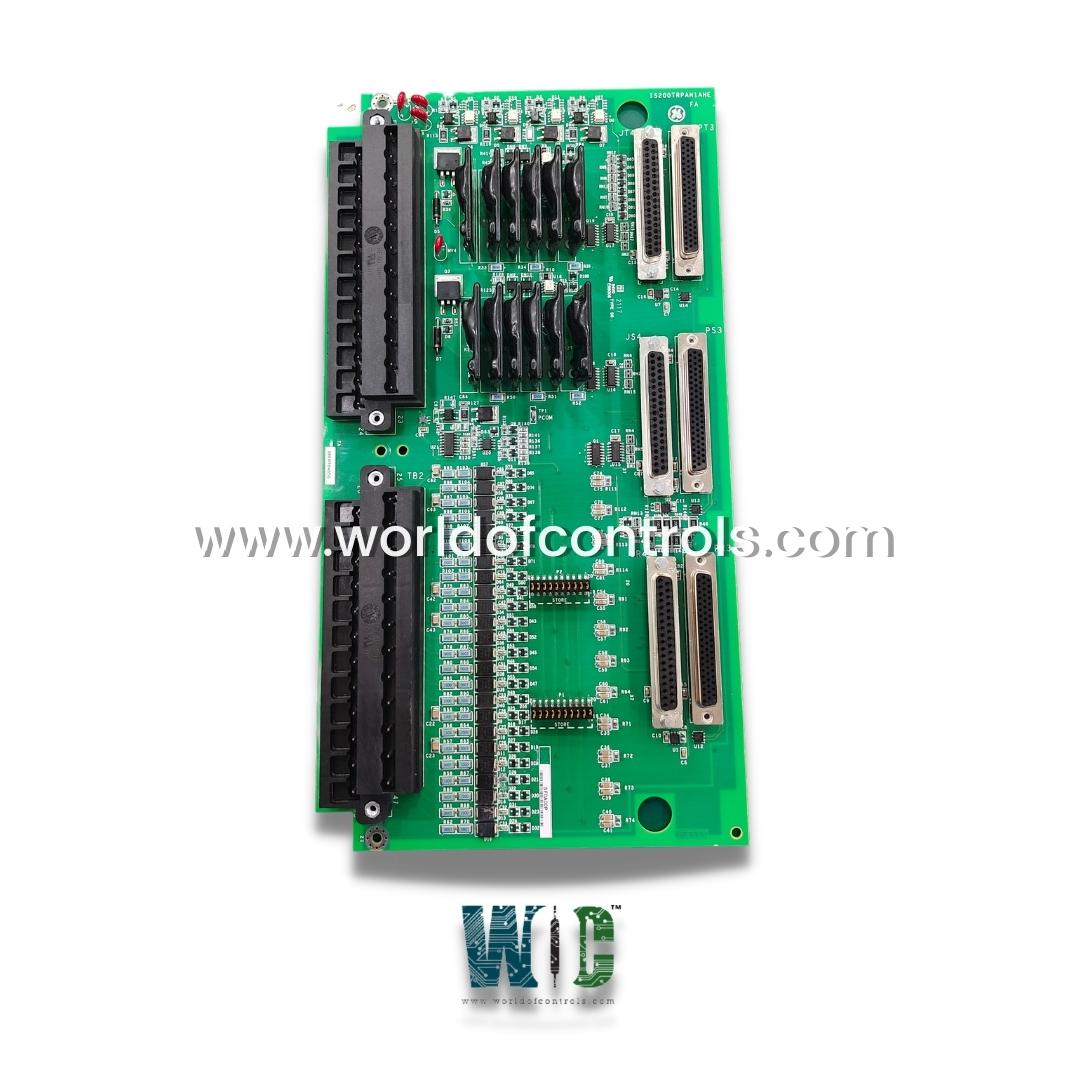
World Of Controls understands the criticality of your requirement and works towards reducing the lead time as much as possible.
IS200TRPAH1BEC - Turbine Primary Trip Terminal Board is available in stock which ships the same day.
IS200TRPAH1BEC - Turbine Primary Trip Terminal Board comes in UNUSED as well as REBUILT condition.
To avail our best deals for IS200TRPAH1BEC - Turbine Primary Trip Terminal Board, contact us and we will get back to you within 24 hours.
Part No.: IS200TRPAH1BEC
Manufacturer: General Electric
Country of Manufacture: United States of America (USA)
MPU pulse rate range: 2 Hz to 20 kHz
MPU pulse rate accuracy: 0.05 percent of reading
MPU input circuit sensitivity: 27 mV pk
Size: 33.0 cm high x 17.8 cm , wide
Technology: Surface mount
Temperature: -30 to 65oC
Product Type: Turbine Primary Trip Terminal Board
Availability: In Stock
Series: Mark VIe
IS200TRPAH1BEC is a Turbine Primary Trip Terminal Board developed by GE. It is a part of Mark VIe control system. The turbine primary trip terminal board plays a crucial role in turbine control systems, particularly within the Mark VIe system. It accommodates either 12 passive pulse rate devices (four per R/S/T section) or six active pulse rate inputs (two per TMR section). These devices sense a toothed wheel to accurately measure turbine speed, providing essential feedback for control and monitoring purposes.
With TRPAH1A, there are distinct guidelines for wiring to different sets of pulse inputs, each tailored to specific requirements:
In addition to wiring configurations, jumper settings also play a crucial role in managing speed input connections, particularly for the bottom pulse inputs. Here's a breakdown of jumper configurations:
In the configuration of the relay terminal board within a turbine control system, jumpers JP1 and JP2 serve a pivotal role in managing the distribution—or "fanning"—of speed input signals from the R section to the other sections of the system. Specifically, these jumpers facilitate the transmission of signals from the four passive speed pickups located in the R section to the S and T section PTURs (Pulse Train Unit Receivers). This distribution is essential to ensure that all three sections of the control system receive synchronized and accurate speed data, which is critical for turbine protection, control, and overall system redundancy.
The primary function of jumpers JP1 and JP2 is to enable the fanning out of speed signals from the R section to the S and T sections. This configuration supports the Triple Modular Redundancy (TMR) structure commonly used in GE Mark VIe systems. By sharing the speed signals across all three sections, the system can perform accurate comparisons and majority voting, thereby ensuring fault-tolerant and reliable speed monitoring.
Without proper jumper placement, the S and T sections may not receive the necessary speed signal inputs, potentially leading to incomplete data, false alarms, or even failure to trip the turbine during an overspeed condition. Thus, configuring these jumpers correctly is a critical step in the system setup.
To configure the jumpers properly, the following steps should be performed:
The WOC team is always available to help you with your Mark VIe requirements. For more information, please contact WOC.
What is IS200TRPAH1BEC?
It is a Turbine Primary Trip Terminal Board developed by GE under the Mark VIe series.
How are the trip relays constructed?
Trip relays are constructed using sets of six individual form A devices arranged in a voting pattern. Any two controllers that vote to close will establish a conduction path through the set, enabling the relay to actuate.
Why is detection of a shorted relay important?
Detection of a shorted relay is crucial to preserve tripping reliability. In the event of a shorted relay, it's essential to identify the issue promptly to prevent potential malfunctions or safety hazards.
How does the sensing circuit work?
A sensing circuit is applied to each set of relays. When the relays are commanded to open and voltage is present across them, the circuit detects if one or more relays are shorted. This detection signal is then transmitted to the PTUR I/O pack to create an alarm, alerting operators to the presence of a shorted relay.
How does the sensing circuit ensure reliability?
The sensing circuit utilizes relay commands from all three packs to avoid false indications. By incorporating inputs from multiple controllers, the sensing circuit mitigates the risk of false alarms, particularly in scenarios where one PTUR I/O pack votes differently from the others.